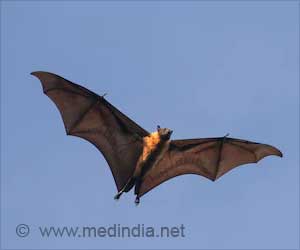- Humans coming in closer contact with bats due to urbanization could be the main reason for re-emergence of Nipah infections.
- Bangladesh strain of virus (NiVB) is found to be responsible for the current outbreak in Kerala.
- NiVB spreads directly from bats to humans and does not have an intermediate source.
Why has the virus re-emerged?
Health and natural science experts are attempting to look at the reasons why the virus has emerged in India after 2001 and 2007.Environmental experts claim that Nipah virus has existed in bats for centuries and has not undergone an evolutionary change, but then why is it that this infection is spreading only now.
Rapid urbanization, coupled with changing climate in recent years, have been stated as some of the reasons for the re-emergence of the Nipah Virus in India.
“We are looking at the causes of the re-emergence of the virus. Specialized team at our strong network of laboratories are trying to find out the causes of outbreak,” said A.C. Dhariwal, adviser, National Vector Borne Disease Control Programme. “India is witnessing a rapid urbanization and animals and birds including bats are losing their natural habitats. In recent years, humans are animals are coming in contact with each other which is also causing outbreak of diseases such as Nipah,” he said.
Sanjana Singh is an environmental science expert who has studied Nipah virus and climate change closely. Her research paper, Nipah Virus: Effects of Urbanization and Climate Change, states that the most prominent ecological factor that contributes to the emergence of the Nipah virus is human intervention into the bat-infested areas due to rapid urbanization.
In Bangladesh and India,an outbreak could be causeddue to the increased human-bat interaction; humans could easily get infected by drinking date palm juice contaminated by bat urine or saliva.
Scientists at the National Institute of Virology (NIV) in Pune have confirmed that the Bangladesh strain of Nipah virus (NiVB) is responsible for the current outbreak in Kerala. The scientists decoded the full genome of the virus drawn from the throat swab sample of an infected patient to come to this conclusion.
The NivB strain is one of the two strains of the Nipah virus, the other one being the Malaysia strain (NiVM). Fatality rates of both the strains are very high.
The Malaysian virus goes from pigs to humans, but the Bangladesh strain travels directly from bats to humans.
Unplanned deforestation of pulpwood (a natural habitat for NiV carrying bats) and mismanagement of large piggeries could cause an outbreak in Malaysia.
History of the Nipah Virus
The first ever outbreak of the Nipah virus occurred in Malaysia in 1998. According to World Health Organization (WHO), the virus can be transmitted from animal-to-human and human-to-human.Subsequent outbreaks in India and Bangladesh have occurred with high fatalities. The first identification of Nipah virus as a cause of an outbreak of encephalitis was reported in 2001 in Meherpur district of Bangladesh. Since then, outbreaks of Nipah virus encephalitis have been reported almost every year in selected districts of Bangladesh. From 1998 to 2015, a total of 600 Nipah virus cases in humans have been reported.
Nipah in India
Both the earlier outbreaks (2001 and 2007) of Nipah virus encephalitis occurred in the eastern state of West Bengal in India, bordering Bangladesh. A total of 71 cases with 50 deaths (70% of the cases) were reported in the two outbreaks.In 2001, there was an outbreak of febrile illness with neurological symptoms in Siliguri, West Bengal. The second outbreak in 2007 witnessed around 30 cases of fever with acute respiratory distress and/or neurological symptoms in Nadia district of West Bengal. All five cases that turned out to be fatal among the 30 tested positive for NiV. The source was later found as a horde of bats hanging from the trees around a patients’ residence which suggests direct contact of the liquor with bat fluids.
Not much is known about the effects of urbanization and climate change in Siliguri and Nadia regions. However, there should be tighter wildlife surveillance due to the region’s proximity to the Nipah Belt of Bangladesh where the NiVB strain is prevalent.
Nipah Virus
The Nipah virus (NiV) causes severe disease in both animals and humans. Its natural host is the fruit bat. It is named after the Malaysian village Kampung Sungai Nipah, where it was first discovered and belongs to the genus Henipavirus. Pigs are the intermediate hosts in the Malaysian strain whereas there are no intermediate hosts in the Bangladesh strain. Humans get infected by consuming fruits that have been infected by droplets of saliva and urine of the fruit bats.The virus is capable of human-to-human transmission in people in close proximity as was documented in a hospital setting in India and seen currently in 2018. It spreads through human secretions and excretions. The major symptoms of the infection are fever, dizziness, headache and vomiting that mostly leads to encephalitis or inflammation of the brain and later to coma.
There is no vaccine for prevention or cure for either humans or animals. The primary treatment for human cases is intensive supportive care.
References:
- Nipah virus infection - (http://www.who.int/csr/disease/nipah/en/)
- Nipah virus - (http://www.searo.who.int/entity/emerging_diseases/links/nipah_virus/en/)
- Nipah virus disease is not a major outbreak. It is only a local occurrence - (http://www.searo.who.int/india/topics/emergencies/mohfw-niv-press-release-24may2018.pdf)
Source-Medindia












